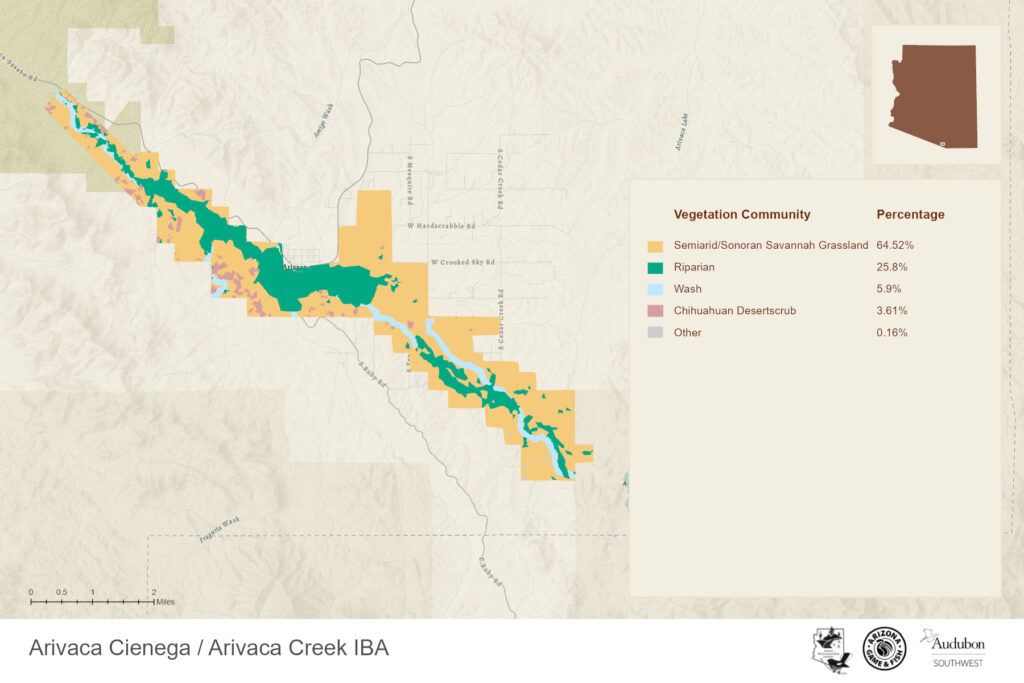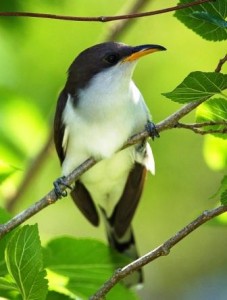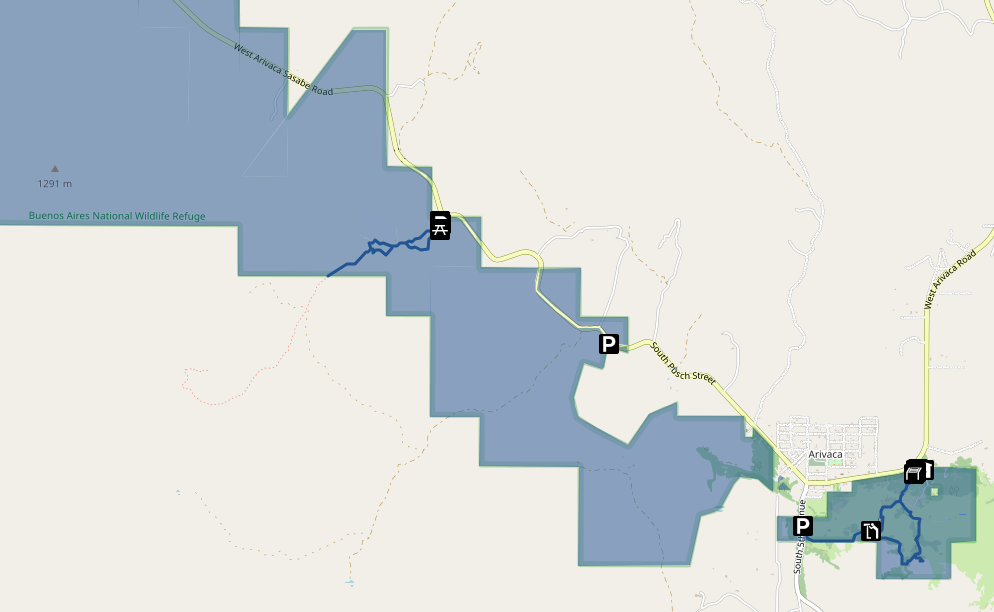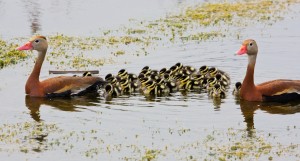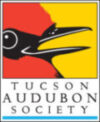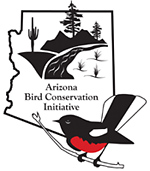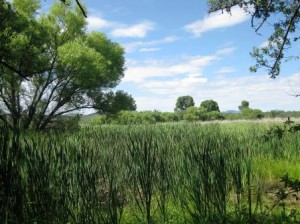 Size: 7.7 square miles, 4930 acres
Size: 7.7 square miles, 4930 acres
Identified: 07/2002
Visiting the IBA: From Tucson take Highway 286 south from Three Points to milepost 12. Turn left and drive east 12 miles to Arivaca. From Interstate 19, take the Amado/Arivaca exit west, turn right at the T, then left at the Cow Palace onto Arivaca Road. Then drive 23 miles to Arivaca. Arivaca Cienega Trail is ¼ mile east of Arivaca; Arivaca Creek Trail is 2 miles west of town.
Ownership: U.S. Fish and Wildlife Service, State Trust Lands, Private (with permission).
Site Description: This IBA is a rare desert cienega and connected creek system in southern Arizona. These wet habitats are just a small part of the Buenos Aires National Wildlife Refuge, which encompasses 118,000 acres. The cienega is supported by seven springs. Arivaca Creek in most years is a perennial creek for 2 miles of its 5½-mile length to where it joins the Brawley Wash system.
Birds: This IBA is important in Arizona because it supports significant numbers of species of conservation status including: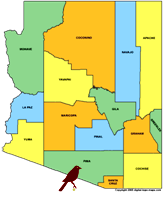
Breeding: Yellow-billed Cuckoo, Gray Hawk, Swainson’s Hawk (Arivaca Creek), Lucy’s Warbler, and Black-bellied Whistling Duck, and small but reliable numbers of nesting Costa’s Hummingbird, Northern Beardless- Tyrannulet, Tropical and Thick-billed Kingbirds, Rufous-winged Sparrow, and Varied Bunting. Buffcollared Nightjar, a rare species, has been known to nest along Arivaca Creek.
Migration: Virginia’s Warbler, MacGillivray’s Warbler, Southwestern Willow Flycatcher, Gray Flycatcher, Swainson’s Thrush, Lucy’s Warbler.
Winter: Many sparrows including Brewer’s, Cassin’s, and Grasshopper Sparrows. There is also an influx of raptors and wading birds including Peregrine Falcon and Great Egret.
Conservation Concerns: Water table draw-down, grazing, cowbird parasitism, non-native plants and animals (bullfrog). Strategies: National Wildlife Refuge expansion, bullfrog control, acquisition of water rights.
Conservation Stewards: Friends of Buenos Aires National Wildlife Refuge
Maps of this Important Bird Area:
State of the IBAs 2014 Baseline–More Technical info about the status of this Important Bird Area
National Audubon Profile Page for Arivaca Cienega and Creek IBA
Complete eBird.org Checklist of birds Reported for Arivaca Cienega and Creek IBA
Location: 31.56° N: 111.3° W
County: Pima
Site Status: Identified 07/2002
Ownership: Buenos Aires NWR
Area: 7.7 square miles, 4930 acres
Criteria: State:
Species of Conservation Concern: western Yellow-billed Cuckoo, Buff-collared Nightjar, Cassin’s, and Grasshopper Sparrows
Species in rare/unique habitat
Outstanding landbird stopover
Site Description: This IBA is rare desert cienega and connected creek system in southern Arizona. These wet habitats are just a small part of the Buenos Aires National Wildlife Refuge, which encompasses 118,000 acres. Arivaca IBA is located thirty miles west from the main north-south interstate highway in southern Arizona, near the town of Arivaca. The cienega is supported by seven springs. Arivaca Creek in most years is a perennial creek for 2 miles of its 5½-mile length to where it joins the Brawley Wash system. The cienega and creek are part of Buenos Aires National Wildlife Refuge.
Ornithological Summary:
| Species or group | Season | Maximum | Year |
| Yellow-billed Cuckoo | Breeding | 8 pairs | 1999 |
| Gray Hawk | Breeding | 3 pairs | 2002 |
| Swainson’s Hawk | Breeding | 3 pairs | 1999 |
| Lucy’s Warbler | Breeding | 500 Individuals | 2002 |
| Black-bellied Whistling Duck | Breeding | 12 Individuals | 2001 |
| Sparrows | Winter | 23 species | 2000 |
This IBA is important in Arizona because it supports significant breeding numbers of Yellow-billed Cuckoo, Gray Hawk, Swainson’s Hawk (Arivaca Creek), Lucy’s Warbler, and Black-bellied Whistling Duck, and small but reliable numbers of nesting Costa’s Hummingbird, Northern Beardless-Tyrannulet, Tropical and Thick-billed Kingbirds, Rufous-winged Sparrow, and Varied Bunting, all of which are Species of Conservation Concern (SCC) in Arizona (11 SCC total). Sora and Virginia Rails nest within the cienega as well, rare and uncommon species respectively in Arizona. Buff-collared Nightjar, another rare species, is known to nest along Arivaca Creek.
Additionally, the IBA supports many conservation species in migration, such as, Southwestern Willow Flycatcher, Gray Flycatcher, Swainson’s Thrush, Lucy’s Warbler, Virginia’s Warbler, and MacGillivray’s Warbler (6 SCC in migration). In winter this IBA becomes a hotspot for Sparrows, both in terms of diversity and density, notable Species of Conservation Concern include: Brewer’s, Cassin’s, and Grasshopper Sparrows. Lastly, winter brings an influx of raptors and wading birds, these include, Peregrine Falcon and Great Egret (both SCC) (5 total SCC in winter). Although, not Species of Conservation Concern, the following other raptors (or functional raptors) and wading birds are also present in winter: Northern Harrier, Cooper’s Hawk, Red-tailed Hawk, American Kestrel, Loggerhead Shrike, and wading birds: Great Blue Heron, Green Heron, and Black-crowned Night Heron. Green Kingfisher, a rare species in Arizona, has been known to winter as well.
Conservation Issues: Water table draw down by nearby water use in the nearby town of Arivaca is a concern. Buenos Aires NWR is working to attain water rights. Cowbird parasitism is likely a significant impact on reproduction performance of many species. Cattle grazing occurs on nearby lands attracting cowbirds to the area. Bullfrog spread into the cienega ponds is a serious concern; this non-native invasive species could alter the food chain structure of the cienega.
